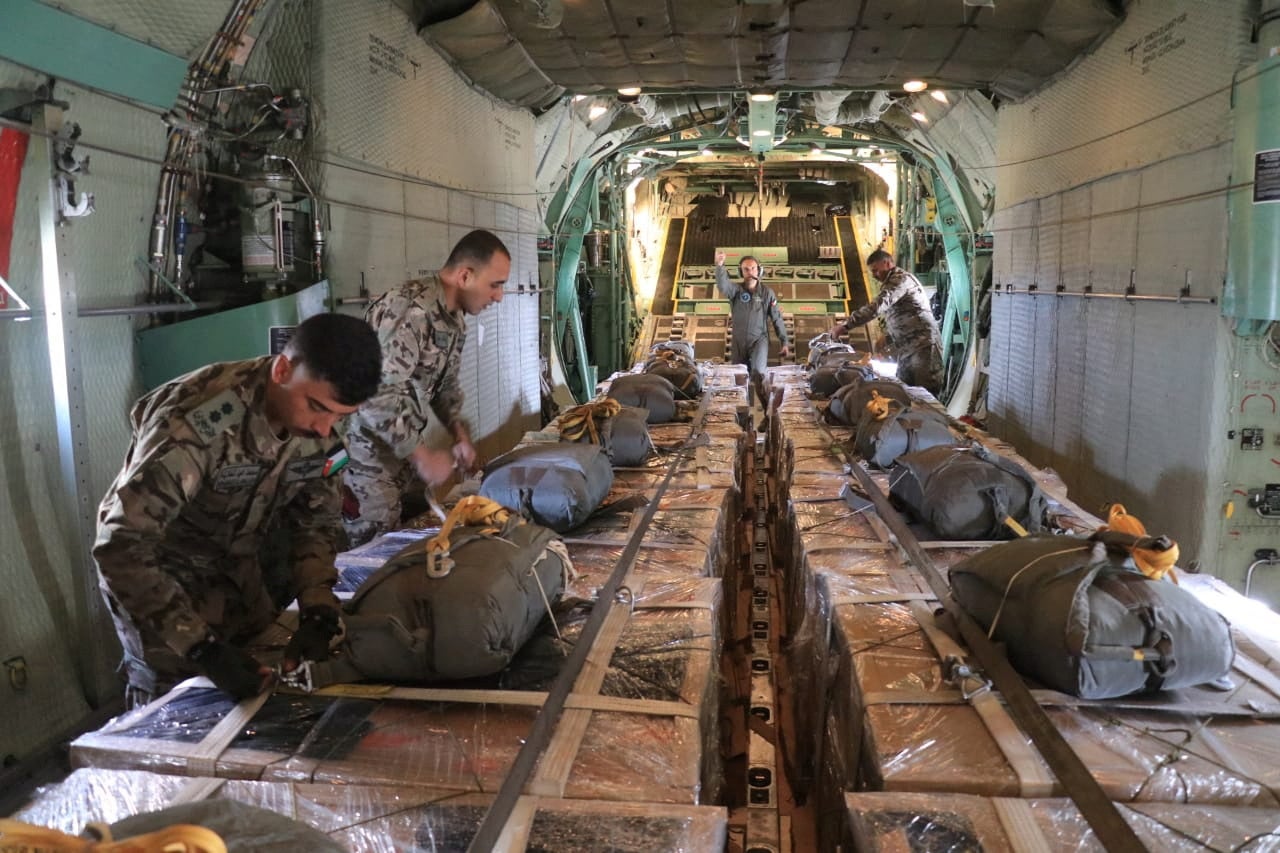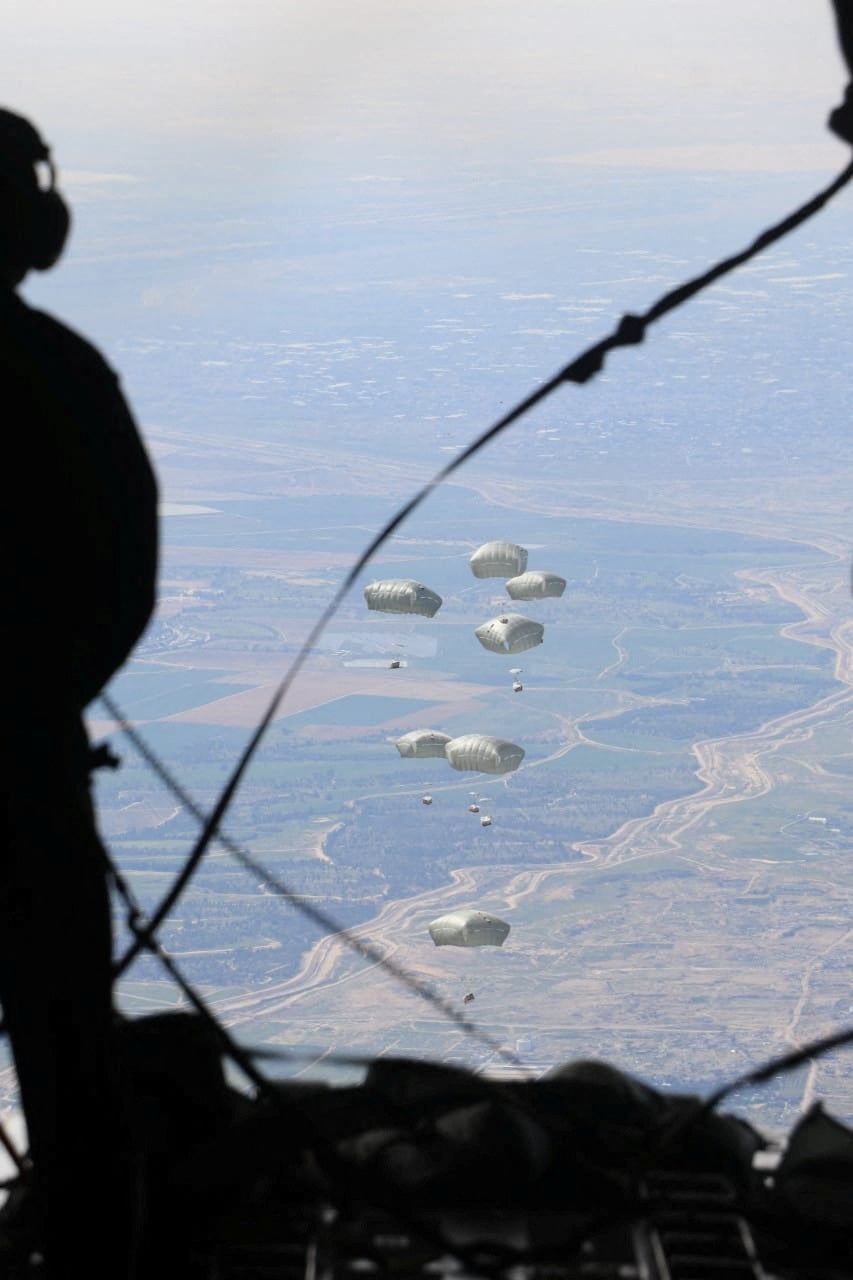US completes first airdrop of food supplies into Gaza as ceasefire talks continue
More than 100 Palestinians were killed while attempting to get aid from a convoy earlier this week
Your support helps us to tell the story
From reproductive rights to climate change to Big Tech, The Independent is on the ground when the story is developing. Whether it's investigating the financials of Elon Musk's pro-Trump PAC or producing our latest documentary, 'The A Word', which shines a light on the American women fighting for reproductive rights, we know how important it is to parse out the facts from the messaging.
At such a critical moment in US history, we need reporters on the ground. Your donation allows us to keep sending journalists to speak to both sides of the story.
The Independent is trusted by Americans across the entire political spectrum. And unlike many other quality news outlets, we choose not to lock Americans out of our reporting and analysis with paywalls. We believe quality journalism should be available to everyone, paid for by those who can afford it.
Your support makes all the difference.The US military has dropped around 38,000 meals into Gaza, two days after more than 100 Palestinians were killed while trying to get aid from a convoy.
The US planes dropped 66 bundles carrying military-issue meals at about 8.30am on Saturday.
A senior administration official told reporters on Saturday that the airdrops are the latest in a collective effort “at the highest levels of the US government” to lead efforts “to get lifesaving humanitarian aid into Gaza to alleviate the suffering of innocent Palestinians who have nothing to do with Hamas”.
“This will be part of a sustained effort in conjunction with our international partners to scale up the amount of lifesaving aid we’re getting into Gaza,” the official said.
The airdrops will continue to be part of an “overall campaign” to step up the amount of aid being delivered to the territory, including through land crossings and a potential sea-based route under negotiation with Israeli and Cypriot officials.
“We’re looking at land routes, we’re looking at the sea route, and we’re looking at the air route to really ensure that we’re exploring every opportunity to get assistance in,” the official added.

A second official said the main challenge in getting aid into Gaza has not been getting trucks through checkpoints but distribution to the people who need it.
Lawlessness, “which was always a problem in the background, has now moved to a very different level”, the US official said, adding that there has been a “commercialisation” of humanitarian aid by “criminal gangs” who are looting and then reselling it.
The way to resolve the problem is to “flood the market” with aid “from every point: air, land and sea”, to demonetise the supplies, the official added.
“You disincentivise the criminal groups, the gangs involved in attacking trucks, and you reduce the pressure on desperate people, not criminals, who just want food,” the official said.
The airdrops come just days after at least 115 Palestinians were killed and hundreds more injured while trying to get to an aid convoy on Thursday.
According to the Gazan health ministry, which is controlled by Hamas, the deaths were due to gunfire from Israeli Defence Forces.
But Israel argues that many of those who died were killed in a stampede trying to get to the aid and that Israeli troops fired warning shorts after the crowd moved against them in a threatening manner.
A Joe Biden administration official called the incident “tragic” and said it “underscores the importance of expanding and sustaining the flow of humanitarian assistance into Gaza in response to the dire humanitarian situation”.
US officials believe the airdrops will alleviate some of the suffering in Gaza, but without a sustained effort with planes dropping aid around the clock, airdrops cannot replace the larger capacity provided by supply trucks.
John Kirby, the White House’s national security communications adviser, said on Friday the airdrops have the advantage of speed, delivering aid quickly to a particular location. But he noted that the drops will be “a supplement to, not a replacement for moving things in by ground”.

The C-130 cargo planes used for the airdrops on Saturday can carry 21 tonnes of palletised cargo which can be dropped to the ground using parachutes. This method has been used to deliver aid to Afghanistan, Iraq, and Haiti in the past.
Following Hamas’s 7 October attack on Israel, when around 1,200 Israelis were killed, Israel has largely blocked food, water, medicine, and other aid from entering Gaza. Only a small number of trucks have entered the Strip through the Rafah crossing, at the border with Egypt, and the Israel crossing at Kerem Shalom.
A quarter of the 2.3 million people in Gaza are at risk of starvation, according to the United Nations. Humanitarian agencies have said airdrops are a last resort and not an efficient way of sending aid.
More than 30,000 Gazans have been killed since the beginning of the war, the Gazan health ministry has said. Ceasefire talks are continuing in Qatar.
During Saturday’s briefing, a third senior US official, who has been involved in negotiations between Israel and Hamas, said that Israel has, in principle, agreed to a six-week ceasefire deal that could be in place “today” – if Hamas “agrees to release a defined category of vulnerable hostages”, including “the sick, wounded, elderly and women”.
“That deal that is on the table would bring immediate relief to the people of Gaza and create the conditions needed to enable the urgent humanitarian work that must be done... and the onus right now is on Hamas,” the official said.
On Friday, President Biden was asked if a ceasefire would be in place by the start of Ramadan this month.
“I’m hoping so. We’re still working real hard at it. We’re not there yet,” the president said.

Join our commenting forum
Join thought-provoking conversations, follow other Independent readers and see their replies
Comments